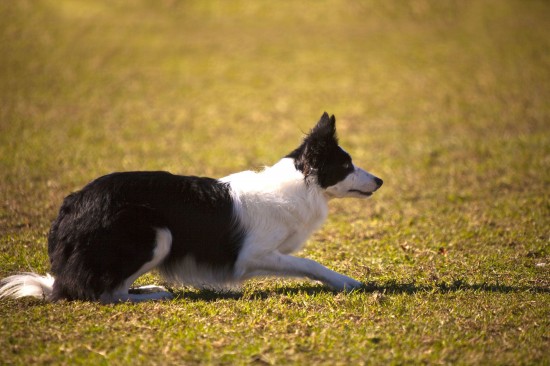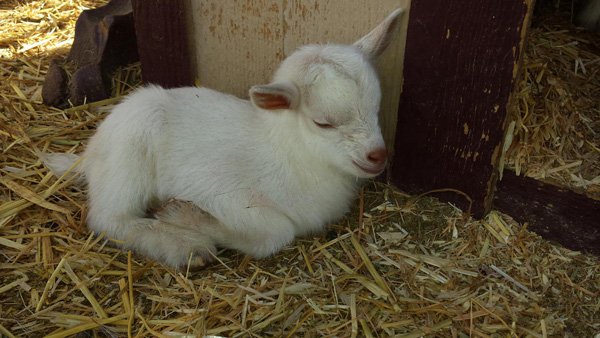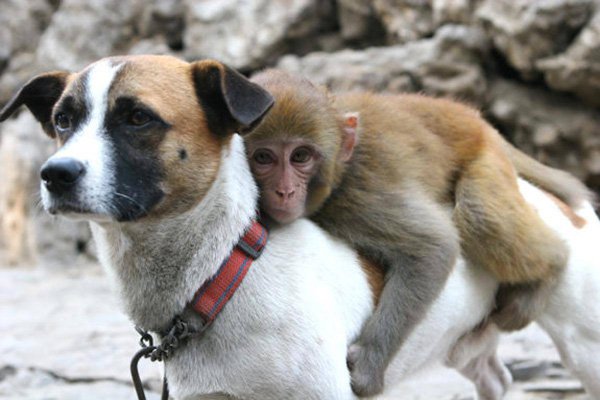

If you own more than one dog or if your dog regularly comes into contact with other dogs, such as at a park or other popular walking location, you may have observed on occasion the behaviour of one dog appearing to stalk other dogs, either one specific dog or several of them.
The reasons behind why one dog might appear to have a tendency to stalk others can be wide and varied, ranging from classical predatory behaviour to a simple desire to play and engage the other dog in a game.
If your dog has a tendency to stalk other dogs, you might wonder what is going on in their mind, and if the behaviour is potentially a problem. Read on to learn more about stalking behaviour in dogs, and why any given dog might stalk others.
Many dogs, particularly those from within the hunting breed group, will naturally have a tendency to display predatory behaviour, of which stalking is one of the classical manifestations.
However, it is not considered common for a dog to view another dog as prey or potentially something to catch, and if this is the case, it can pose a problem. Whether or not the predatory dog actually plans to catch the other party, and what will happen if they do, will depend from case to case. However, even if the predatory dog never makes contact with their quarry, being stalked about the place can prove threatening and unnerving for the other dog!
Commonly, dogs that have a tendency to stalk are unlikely to pick on dogs the same size as them or even larger, and will generally seek out much smaller dogs for their attentions! There are multiple reasons behind why this might be, other than the obvious that a large or similar sized dog is unlikely to appear to be viable prey, or tolerate being trailed around the place by a shadow!
Small dogs may not be “read” as dogs by the stalker, and despite the fact that they still act, smell and look like dogs, the fact that they are similar in size to potential genuine prey may encourage larger dogs to hone their hunting skills.
Added to this, small dogs will often react to this treatment with a prey-like response; they are less likely to stand their ground and face the other dog down, and more likely to creep off or run off to try to escape, enhancing the prey drive, and may be rather noisy and squeaky about it all as well!
All of these factors work together to convince would-be stalking dogs that a smaller dog might be viable prey or practice.
Stalking should not automatically be viewed as a predatory behaviour, and in some cases, stalking behaviour may form part of normal play, and an invitation to another dog to take part in a game.
If your dog is following another dog step for step and constantly chasing after them, they are likely looking for attention, or an invite to be allowed to interact with them and join in with their game. Sometimes, two dogs playing together will display stalking behaviour, where one dog will pursue the other one while they run or pretend not to notice, and will often at some point turn around and turn the tables, chasing after the other dog in return
It is important to keep an eye on the body language of the two dogs involved in order to assess if the stalking behaviour is simply fun and games, which is indicated by both dogs being relaxed and happy and respecting each other’s boundaries. Look out for a loose, relaxed posture, open mouth but without the teeth showing, and neither dog taking it too far if the other dog indicates that they have had enough.
If your dog is viewing their stalking as a serious business and isn’t respecting the fact that the other dog is not playing and having fun, stalking behaviour can soon prove to be problematic. Running after another dog and generally being loud and obvious in their movements does not indicate stalking behaviour that might get serious, but stealthy stalking sometimes does. Look out for a dog that is moving slowly and quietly, carefully guarding their movements in order to try to disguise themselves from the other dog. This will usually mean that their profile will be low to the ground and stealthy, with their eyes fixated upon their target.
It is fair to say that when your dog is being quiet and not attracting your attention is the main time to watch out! If your stalking dog does intend to ultimately catch their prey, they are likely to pounce on the other dog and attempt to grasp them by the neck, shaking them around and possibly biting them. You must keep a careful eye out for this, and nip your dog’s stalking behaviour in the bud before it gets this far.
Training your dog to respond to recall and stop what they are doing when told can help, but if your dog is likely to pose a problem in canine social situations, you may need to accept that they will have to be kept on a lead when around other dogs, particularly small ones.
 Turmeric for horses everything you need to know
Turmeric for horses everything you need to know
Turmeric for horses everything you need to know
Turmeric for horses everything you need to know
 Hay Fever In Dogs
Hay Fever In Dogs
Hay Fever In Dogs
Hay Fever In Dogs
 Cat Feeding Tips From The Experts
Cat Feeding Tips
Cat Feeding Tips From The Experts
Cat Feeding Tips
 Labradoodle Genetic Diversity And Hereditary Health
Labradoodle Genet
Labradoodle Genetic Diversity And Hereditary Health
Labradoodle Genet
 How To Pick The Perfect Dog Bed
How To Pick The Perfect Dog Bed
Owning a good
How To Pick The Perfect Dog Bed
How To Pick The Perfect Dog Bed
Owning a good
Copyright © 2005-2016 Pet Information All Rights Reserved
Contact us: www162date@outlook.com